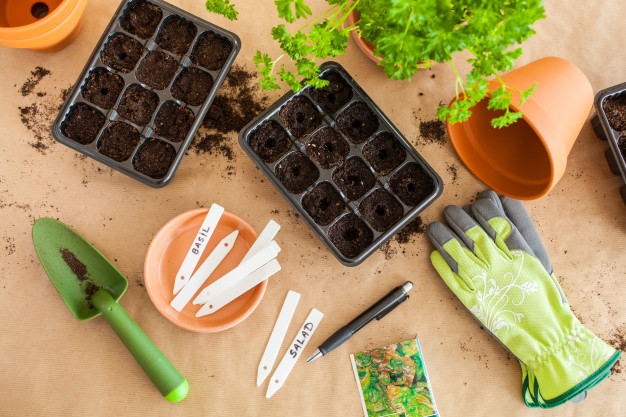How to Sow Seeds 101
- By Abhi
- 22nd August 2020

New to gardening or simply looking to refresh? This step-by-step guide is sure to get you on your way. From sowing seeds to transplanting them – find out how to go about it.
Here’s a list of things you’ll need:
- Seeds
- Seed tray
- Potting mix
- Water
- Sieve
- Pots
Follow these easy steps:
- Check the packet of seeds for any instructions regarding the recommended time of year for sowing, and the depth and spacing of the seeds, amongst other important conditions. It is essential to try and follow these recommendations to ensure better results.
- Sieve the potting mix over the seed trays, filling the tray 1-2cm below the rim. If you can’t find a seed tray or just want to save money, DIY! Be sure to maintain the correct depth and punch holes for drainage.
- Water your potting mix carefully without disturbing the soil.
- Use a finger to create a well in each of the induvial cells. Some seed trays may not have induvial cells but worry not. Simply use your finger to create a trench, and make sure to space the trenches well.
- Now place your seeds in the cell/trench. It is recommended that small seeds have up to 3-4 seeds in each cell whilst larger seeds have only 2-3.
- Cover the seeds with potting mix.
- Place your seed tray in the recommended area but a semi-shade area is your safest bet.
- Make sure to water your seed trays at least once a day.
Aftercare tips
- Regularly check for emergence.
- Check when the ‘true’ leaves become visible. These often look like miniature versions of the adult plant’s leaves. It is an indication that your seedlings are ready for transplanting.
- Use a ‘dibber’ or blunt stick to loosen the soil around the seedlings’ roots to prick out your seedlings.
- Lift the seedlings by their true leaves gently between your finger and thumb.
- Pot the seedlings in a 3.5inch pot. Bury them up to the first pair of leaves.
Good job! You’re all set to see your seeds come alive. A helpful tip: remember to have fun and don’t worry too much about the sowing. The plants are at the beginning of the growth cycle here, so you’ll have plenty of time to change or adjust.

Add A Comment